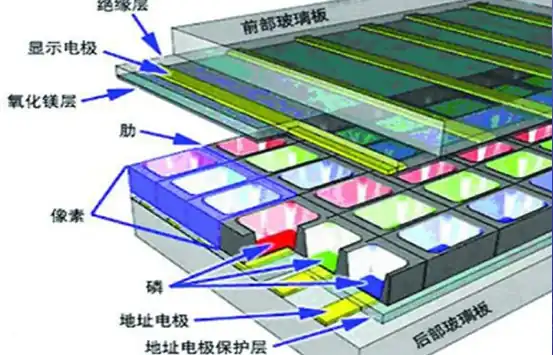Magnesium hydroxide (Mg(OH)₂), an important inorganic compound, possesses unique physicochemical properties that lend themselves to a wide range of applications across various industrial sectors. Among these, its refractive index, a core parameter of its optical performance (approximately 1.50–1.60), determines the material’s ability to modulate light. Magnesia Biological will focus on the refractive index characteristics of magnesium hydroxide, exploring its innovative applications in downstream fields such as optics, polymer materials, coating technology, and electronic displays.

I. Transparency and Anti-Reflection Optimization in Optical Materials
With a refractive index of 1.561, magnesium hydroxide falls between traditional glass (1.5) and polymers (1.3–1.6), making it an ideal modifier for optical media.
1. High-Transparency Composite Lens Materials
In resin-based optical lenses (such as camera lenses and spectacle lenses), the addition of nano-sized magnesium hydroxide can balance the refractive index difference between the matrix and the filler, reducing interfacial light scattering and increasing light transmittance to over 92%. For example, a Japanese company developed a polycarbonate-magnesium hydroxide composite material that exhibits a 15% increase in light transmittance compared to traditional materials, while also possessing anti-UV aging properties.
2. Anti-Reflection Coating Design
Magnesium hydroxide thin films prepared via the sol-gel method (with a thickness of 100–200 nm) can be applied to the surface of solar panels or displays. By leveraging their refractive index gradient effect, these films reduce reflection loss. Experiments show that such coatings can reduce the reflectivity of glass substrates from 8% to below 2%.
II. Functional Modification of Polymer Materials
The moderate refractive index of magnesium hydroxide and its compatibility with polymer matrices allow it to enhance the optical properties of materials while also providing flame retardancy and mechanical reinforcement.
1. Transparent Flame-Retardant Plastics
Adding 20% modified magnesium hydroxide to polypropylene (PP) or polyethylene (PE) can enable the composite material to achieve a UL94 V-0 flame retardancy rating while maintaining a light transmittance of over 80%. Its refractive index matching property avoids the haze increase associated with traditional flame retardants (such as aluminum hydroxide), making it suitable for applications like LED lampshades and electronic device housings.
2. Low-Haze Packaging Films
Addressing the demand for high transparency in food packaging films, magnesium hydroxide as an inorganic filler can replace some organic brightening agents. This not only reduces production costs but also keeps the film haze below 5% (ASTM D1003 standard).
III. Optical Modulation in Specialty Coatings
The refractive index of magnesium hydroxide can work synergistically with other components to optimize the optical performance of coatings while enhancing environmental durability.
1. Energy-Saving Architectural Coatings
In exterior wall coatings for buildings, magnesium hydroxide is used in combination with titanium dioxide (refractive index 2.7) to form a broad-spectrum light-reflecting layer by controlling particle size distribution. Tests show that such coatings achieve a visible light reflectance of 85% and an infrared reflectance of over 90%, which can reduce the surface temperature of buildings by 8–12℃.
2. Automotive Metallic Flake Paints
As a carrier for effect pigments, magnesium hydroxide has a refractive index close to that of aluminum powder (1.44), which can reduce color differences caused by incident light interference and enhance the metallic texture of the paint surface. In the water-based metallic paints launched by BASF Germany, the content of magnesium hydroxide reaches 12%, and VOC emissions are reduced by 40%.
IV. Innovative Applications in the Electronic Display Industry
Against the backdrop of rapid development in flexible display technology, the refractive properties of magnesium hydroxide and its compatibility with flexible substrates have garnered significant attention.
1. Flexible OLED Light Extraction Layer
Integrating magnesium hydroxide nanowire arrays on top of OLED devices, leveraging its refractive index between that of the ITO electrode (1.9) and air (1.0), can improve light extraction efficiency by 30%, significantly increasing screen brightness and energy efficiency.
2. Mini LED Encapsulation Glue
High refractive index encapsulation glues (typically requiring ≥1.55) are crucial materials for Mini LED backlight modules. Compositing magnesium hydroxide with silicone resin can increase the refractive index of the encapsulation glue to 1.58 while maintaining over 90% light transmittance and anti-yellowing performance.
V. Future Trends and Technical Challenges
Despite the broad application prospects of magnesium hydroxide, the following technical bottlenecks still need to be overcome:
- Nano-dispersion Technology: Preventing particle agglomeration to avoid light scattering losses.
- Surface Modification Processes: Enhancing interfacial compatibility with organic matrices.
- Low-Cost Production: Developing green synthesis routes to replace the traditional brine-lime method.
Messi Biology states that magnesium hydroxide, with its unique refractive index characteristics, is transitioning from its traditional role as a flame retardant to a high value-added optical functional material. With advancements in surface modification technology and composite systems, it will play a greater role in sustainable material innovation in the context of carbon neutrality. In the future, interdisciplinary collaboration will drive breakthrough applications of this material in cutting-edge fields such as photonic crystals and transparent armor.
